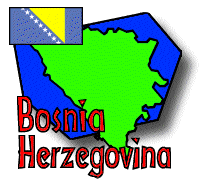Person of the Day: Amir Telibec(h)irovic(z)![]()
Place of the Day: Barcelona-Sarajevo A.L.D. Club![]()
Group Dispatch, April 16

Questions? Ask Padraic ![]() !
!
Return to Fast Facts
 |
 |
 |
 |
 |
|
Itinerary/ Journal |
Discussions |
About Bosnia |
eDscape Projects |
Scrapbook |
|
|
|
|
|
Copyright 1997-99 BikeAbout. All rights reserved.
